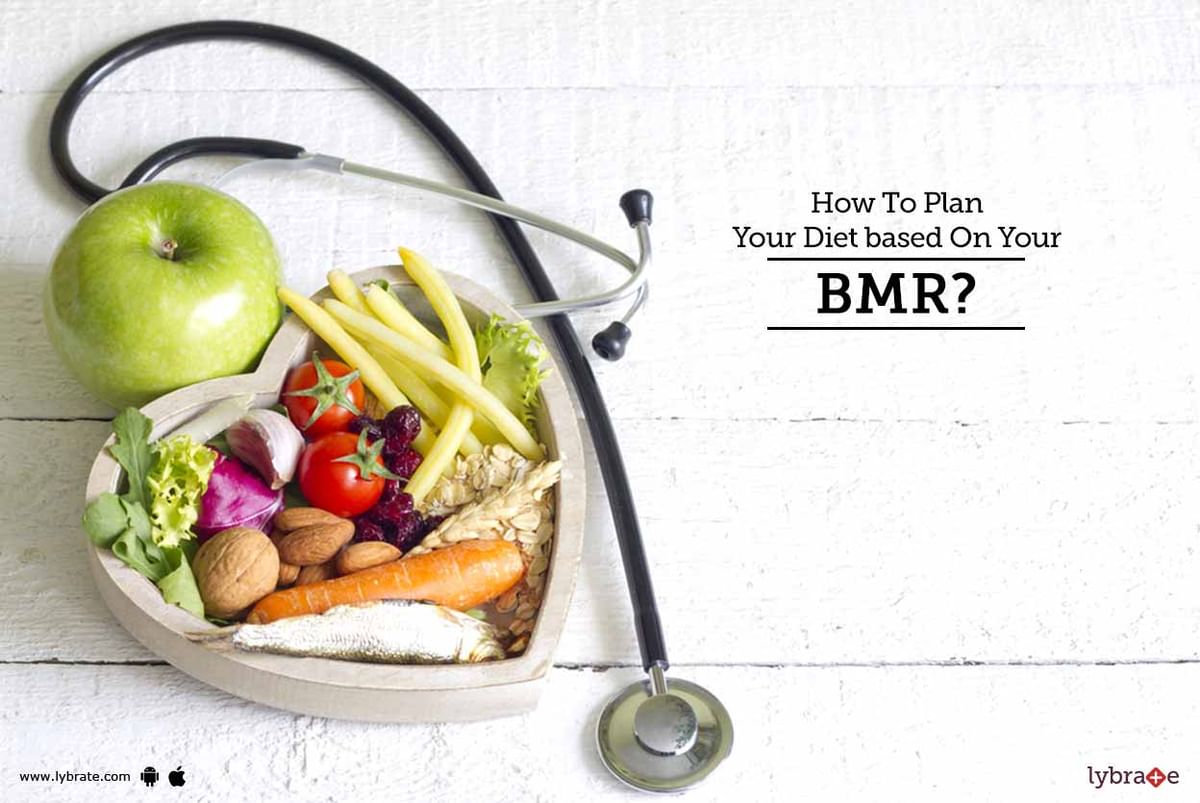Apple cider vinegar (ACV) has garnered immense popularity in the wellness community, particularly as a natural remedy for weight loss. Its unique blend of enzymes, probiotics, and acetic acid has made it a staple in many weight-loss regimens. While its benefits have been long touted by health enthusiasts, more recent scientific studies are shedding light on how using apple cider vinegar to lose weight is more than just a fad.
Apple cider vinegar aids weight loss through several mechanisms, including appetite suppression, fat burning, and metabolism-boosting effects. The key ingredient, acetic acid, is believed to interact with the body’s metabolic pathways in ways that promote fat loss. When incorporated into your daily routine, ACV can help you manage your weight more effectively by increasing calorie burn, stabilizing blood sugar levels, and reducing your appetite.
In this ultimate guide, we will walk you through the most effective tips and tricks for using apple cider vinegar to lose weight. Whether you’re just starting your weight loss journey or looking to enhance your results, this guide will provide you with actionable advice on how to use ACV safely and effectively to achieve your fitness goals. By following the tips outlined here, you can transform your body and take advantage of the numerous health benefits of apple cider vinegar.
The Science Behind Apple Cider Vinegar and Weight Loss

Apple cider vinegar has been credited with various health benefits, but its role in weight loss is particularly noteworthy. The science behind apple cider vinegar’s effectiveness for weight management is rooted in its key component: acetic acid. This organic acid has been shown to have several physiological effects on the body, each contributing to fat loss.
Reducing Appetite and Calorie Intake
One of the primary ways that apple cider vinegar aids weight loss is by helping to reduce appetite. Studies have demonstrated that consuming apple cider vinegar can lead to feelings of fullness, which can result in a lower overall calorie intake. This effect is particularly beneficial for those who struggle with overeating or cravings. A 2009 study published in Bioscience, Biotechnology, and Biochemistry showed that participants who drank a mixture of vinegar and water before meals consumed fewer calories throughout the day.
The acetic acid in apple cider vinegar is believed to interact with enzymes in the digestive system that promote satiety. This means that, with just a small amount of apple cider vinegar before meals, you could find it easier to manage your hunger levels, which is an important factor in sustainable weight loss.
Boosting Metabolism and Fat Oxidation
The metabolic-boosting properties of apple cider vinegar are another reason it is effective for weight loss. Acetic acid is thought to increase the body’s ability to burn fat by enhancing fat oxidation. This means that your body is better able to break down fat molecules, converting them into usable energy. In a 2018 study published in the Journal of Functional Foods, researchers found that vinegar consumption improved fat metabolism and increased fat burning, particularly in abdominal regions.
Additionally, apple cider vinegar may support the regulation of blood sugar levels. By stabilizing blood sugar spikes after meals, it can help reduce insulin resistance, which is often associated with fat storage. In this way, ACV can support a more efficient metabolic process, promoting the breakdown of fat rather than its storage.
Expert Insights on the Effectiveness of Apple Cider Vinegar for Weight Loss
Many health experts recognize the potential of apple cider vinegar as a weight loss aid, though they caution that it should not be seen as a magic bullet. Dr. John Swartzberg, a professor emeritus at the University of California, Berkeley, explains, “While apple cider vinegar may have a role in weight loss, it’s not going to lead to dramatic changes on its own. It’s most effective when combined with a healthy diet and regular exercise.” Dr. Swartzberg emphasizes that sustainable weight loss comes from making consistent, healthy lifestyle choices.
In conclusion, the science behind apple cider vinegar’s weight loss effects supports its role as a valuable tool for enhancing fat loss and boosting metabolism. Whether by reducing appetite, increasing fat oxidation, or stabilizing blood sugar levels, ACV provides several mechanisms through which weight loss can occur. However, it is essential to approach its use with a balanced and comprehensive approach to health and fitness.
Tip 1: How to Incorporate Apple Cider Vinegar into Your Diet Safely
Apple cider vinegar (ACV) is a potent, natural remedy that can offer a range of health benefits, including weight loss. However, as with any supplement or dietary addition, it’s essential to use ACV correctly and safely to maximize its effects while minimizing potential risks.
Recommended Dosages and How to Consume Apple Cider Vinegar for Best Results
To reap the benefits of using apple cider vinegar to lose weight, moderation and proper dosage are key. Most experts recommend starting with 1 to 2 tablespoons (15 to 30 ml) of apple cider vinegar per day. This amount is effective in promoting weight loss without causing adverse effects. It is best diluted in a large glass of water, as drinking undiluted vinegar can be harsh on your teeth and digestive system.
For beginners, starting with a smaller amount—such as 1 teaspoon (5 ml)—and gradually increasing to 1 to 2 tablespoons can help your body adjust. The typical daily intake is often divided into two doses, taken before meals to help curb appetite and aid digestion.
Best Time to Take Apple Cider Vinegar for Optimal Fat Burning
The timing of when you take apple cider vinegar can influence its effectiveness. While there’s no one-size-fits-all answer, many people find that taking apple cider vinegar before meals—about 15 to 30 minutes before eating—helps reduce appetite and supports better digestion. This pre-meal consumption is particularly useful because the acetic acid in vinegar can promote satiety, leading to reduced calorie intake throughout the day.
For optimal fat burning, it’s also beneficial to consume apple cider vinegar in the morning, as it can help kickstart your metabolism for the day ahead. Drinking it on an empty stomach can set the stage for improved digestion and may help stabilize blood sugar levels.
Important Safety Precautions to Avoid Side Effects
While apple cider vinegar offers numerous health benefits, improper use can lead to undesirable side effects. To avoid potential issues, here are some essential safety precautions:
- Dilute the Vinegar: Never drink apple cider vinegar straight from the bottle. The acidity of vinegar can erode tooth enamel over time and cause throat irritation. Always dilute it in at least one cup (240 ml) of water to protect your teeth and digestive system.
- Start Slowly: If you’re new to apple cider vinegar, it’s best to start with a small dose and gradually increase it. This helps your digestive system adjust to the acidity and minimizes any discomfort.
- Monitor Blood Sugar Levels: Although apple cider vinegar can help stabilize blood sugar levels, those with diabetes or anyone on blood sugar medication should consult a healthcare professional before using it regularly.
- Consult Your Doctor if You Have Digestive Issues: People with gastrointestinal problems like acid reflux, ulcers, or IBS should be cautious when using ACV, as its high acidity may exacerbate symptoms.
- Avoid Excessive Consumption: While apple cider vinegar is beneficial in moderate amounts, excessive consumption—more than 2 tablespoons (30 ml) per day—can lead to negative side effects like stomach irritation or lowered potassium levels.
By following these guidelines, you can ensure that you are using apple cider vinegar safely and effectively to support your weight loss journey.
Tip 2: Combine Apple Cider Vinegar with a Balanced Diet for Maximum Effectiveness

While apple cider vinegar can offer significant weight loss benefits, its effects are amplified when paired with a healthy and balanced diet. Just as you wouldn’t rely on exercise alone to achieve weight loss, using apple cider vinegar without mindful eating may not lead to the results you’re hoping for. To maximize your efforts, it’s crucial to combine ACV with nutrient-dense foods that support your weight loss goals.
The Importance of a Balanced Diet in Conjunction with Apple Cider Vinegar for Weight Loss
Apple cider vinegar is not a magic bullet for weight loss; it works best when incorporated into a broader, well-rounded dietary plan. A balanced diet should include a variety of macronutrients—proteins, healthy fats, and complex carbohydrates—along with essential micronutrients like vitamins and minerals.
By pairing ACV with a diet rich in whole foods, fiber, and lean protein, you can enhance your body’s ability to burn fat, improve digestion, and regulate blood sugar levels. For instance, a diet high in fiber helps you feel fuller for longer, which can complement the appetite-suppressing effects of apple cider vinegar. Additionally, lean proteins (such as chicken, fish, and legumes) support muscle-building, which in turn boosts your metabolism.
Best Foods to Pair with Apple Cider Vinegar for Enhanced Results
To optimize the fat-burning effects of apple cider vinegar, consider incorporating the following types of foods into your diet:
- Leafy Greens and Vegetables: Vegetables such as spinach, kale, and broccoli are rich in fiber, which supports digestion and helps maintain a feeling of fullness. These foods, when combined with apple cider vinegar, can enhance the vinegar’s fat-burning properties by reducing overall calorie intake.
- Healthy Fats: Foods like avocado, olive oil, and nuts provide healthy fats that are essential for hormone production and energy. Consuming healthy fats in moderation can help regulate your appetite and promote fat loss when used in conjunction with apple cider vinegar.
- Lean Proteins: As mentioned earlier, protein is critical for muscle repair and growth, which in turn accelerates fat loss. Foods such as chicken breast, fish, tofu, and eggs provide essential amino acids to build lean muscle mass, further boosting metabolism.
- Whole Grains: Foods like quinoa, brown rice, and oats are excellent sources of complex carbohydrates, providing long-lasting energy and supporting metabolic health. These foods are low on the glycemic index, helping to stabilize blood sugar levels and reduce hunger cravings, which complements the appetite-suppressing effects of apple cider vinegar.
- Fermented Foods: Incorporating fermented foods like yogurt, kefir, and sauerkraut into your diet can support gut health, improving digestion and nutrient absorption. Since apple cider vinegar itself contains probiotics, consuming these foods together can work synergistically to enhance gut health and improve overall metabolic function.
How Apple Cider Vinegar Supports Digestion and Metabolism When Used Alongside Healthy Eating Habits
One of the primary reasons apple cider vinegar is so effective for weight loss is its ability to enhance digestion and metabolism. The acetic acid in ACV increases stomach acid production, which helps break down food more efficiently. This process can lead to better nutrient absorption, improved digestion, and a more efficient metabolism.
Additionally, apple cider vinegar can help regulate blood sugar levels by reducing the glycemic index of high-carb foods. This means that when you consume carbohydrates, ACV can help prevent rapid spikes in blood sugar, which can lead to cravings and fat storage. By incorporating apple cider vinegar into your meals, particularly those high in carbohydrates, you can improve your body’s ability to process food and burn fat more effectively.
Practical Tips for Combining ACV with a Balanced Diet
- ACV Salad Dressings: A simple and delicious way to incorporate apple cider vinegar into your meals is by making homemade salad dressings. Combine ACV with olive oil, mustard, garlic, and a bit of honey to create a tangy dressing that enhances your salads.
- ACV in Smoothies: Add a teaspoon or tablespoon of apple cider vinegar to your morning smoothie. Pair it with fruits, greens, and protein powder for a nutrient-packed meal that supports both digestion and weight loss.
- ACV Tea: Warm water, lemon, and a splash of apple cider vinegar make a refreshing morning drink that boosts metabolism and aids digestion. Drinking this before meals can help curb your appetite and get your digestive system ready for the day.
By combining apple cider vinegar with a balanced diet full of healthy, whole foods, you not only boost the fat-burning potential of the vinegar but also ensure that you are fueling your body with the nutrients it needs to thrive. This holistic approach to weight loss will lead to better, more sustainable results over time.
Tip 3: Exercise and Apple Cider Vinegar – A Power Combination for Fat Loss
While apple cider vinegar (ACV) can aid in weight loss by improving digestion and metabolism, it’s most effective when combined with regular exercise. When used together, exercise and ACV work synergistically to accelerate fat burning, improve muscle tone, and boost overall health. Whether you’re doing cardio, strength training, or a combination of both, incorporating ACV into your fitness routine can help you achieve faster, more sustainable results.
The Synergy Between Physical Activity and Apple Cider Vinegar for Increased Fat Burn
The key to effective weight loss lies in creating a balance between calorie intake and expenditure. Exercise increases the number of calories you burn, and when paired with apple cider vinegar’s ability to regulate blood sugar levels and suppress appetite, you can maintain a steady calorie deficit without feeling deprived.
ACV supports fat burning by increasing metabolism through the action of acetic acid, which helps the body break down fats more efficiently. Exercise, particularly high-intensity interval training (HIIT) and strength training complement this effect by stimulating muscle growth and elevating the post-exercise calorie burn (known as excess post-exercise oxygen consumption, or EPOC).
By combining these two powerful weight loss tools—exercise and apple cider vinegar—you can significantly increase the rate at which your body burns fat, even when at rest.
Recommended Types of Exercises to Complement Apple Cider Vinegar Use
Certain types of exercise are especially effective when paired with apple cider vinegar. Below are some recommended exercises that can maximize the fat-burning effects of ACV:
- Cardio Workouts: Aerobic exercises like running, cycling, and swimming elevate your heart rate and increase calorie burn. These exercises can help you create a larger calorie deficit, which, when combined with ACV, accelerates fat loss. Studies show that regular aerobic exercise increases the number of calories burned during the day, contributing to an overall reduction in body fat.
- Strength Training: Lifting weights or performing bodyweight exercises like squats, lunges, and push-ups helps build lean muscle mass. Muscle tissue burns more calories than fat tissue, even at rest. Therefore, the more muscle you have, the higher your resting metabolic rate (RMR) will be, leading to increased fat burning over time. When combined with apple cider vinegar, which helps regulate metabolism, strength training is an excellent way to accelerate your weight loss efforts.
- HIIT (High-Intensity Interval Training): HIIT is an intense form of exercise that alternates between short bursts of maximum effort and brief recovery periods. HIIT is particularly effective for fat loss because it keeps your body burning calories even after your workout is over. Pairing HIIT with apple cider vinegar can amplify the fat-burning effect, as the vinegar helps to boost metabolism, allowing you to burn fat more efficiently during the recovery phase of your workout.
- Yoga and Pilates: While these exercises might not burn as many calories as high-intensity workouts, they are great for improving flexibility, reducing stress, and enhancing overall muscle tone. These activities support mindful eating and digestion, both of which complement the benefits of apple cider vinegar for weight loss.
How to Incorporate Apple Cider Vinegar into Your Fitness Routine for Faster Results
To get the best results from your exercise routine and apple cider vinegar, here are some tips on how to incorporate ACV into your daily fitness regimen:
- Pre-Workout ACV Drink: Drink a glass of water with 1–2 tablespoons of apple cider vinegar about 20–30 minutes before your workout. This will help increase energy levels, suppress appetite, and enhance digestion. It can also help you avoid overeating after your workout.
- Post-Workout Recovery: After exercising, your body needs to replenish lost nutrients and recover from the strain of the workout. ACV can help reduce post-workout muscle soreness and improve recovery. Consider adding apple cider vinegar to a protein shake or smoothie to help with nutrient absorption and muscle repair.
- Hydration and ACV: During long or intense workout sessions, hydration is crucial. You can create a natural, hydrating sports drink by adding a tablespoon of apple cider vinegar to your water bottle. This not only keeps you hydrated but also helps balance electrolytes, aiding in muscle function and preventing fatigue.
- Combine with Post-Exercise Meals: After exercising, it’s important to fuel your body with nutrient-dense meals. Add apple cider vinegar to your post-workout meal, such as using it in a salad dressing or mixing it into a homemade marinade for lean meats or tofu. The vinegar will help improve digestion and metabolism, ensuring that the nutrients from your meal are absorbed efficiently.
The Science of Exercise and ACV Synergy
The benefits of combining apple cider vinegar with exercise are rooted in scientific principles. Exercise increases blood flow, which helps deliver nutrients and oxygen to muscles, enhancing their ability to grow and burn fat. Meanwhile, ACV’s acetic acid accelerates the process of fat oxidation, improving how efficiently your body burns stored fat for energy.
Additionally, both exercise and ACV help balance hormones like insulin, which plays a key role in regulating fat storage and appetite. Insulin sensitivity can be improved with regular physical activity and the consumption of apple cider vinegar, making it easier for your body to burn fat rather than store it.
Practical Tips for Combining Exercise and ACV
- Consistency is Key: Just as with exercise, consistency is essential when using apple cider vinegar. Incorporate ACV into your daily routine alongside regular workouts to see maximum results.
- Monitor Your Progress: Keep track of your fitness and weight loss progress. Record how you feel after ACV and exercise sessions, noting improvements in energy levels, fat loss, and muscle definition.
- Stay Hydrated: Always drink plenty of water when using apple cider vinegar, especially during workouts. ACV is acidic, and drinking it without proper hydration can irritate your digestive system.
By pairing regular exercise with apple cider vinegar, you create a powerful synergy that accelerates fat burning, boosts metabolism, and enhances overall fitness. Whether you are a beginner or a seasoned athlete, this combination can help you achieve faster and more noticeable weight loss results.
Conclusion: Achieving Sustainable Weight Loss with Apple Cider Vinegar
In this ultimate guide, we’ve explored how using apple cider vinegar (ACV) can be a game-changer in your weight loss journey. Whether you’re just starting or looking to enhance your existing routine, ACV offers a powerful, natural way to boost metabolism, reduce appetite, and support fat burning. By combining ACV with a balanced diet, regular exercise, and a consistent routine, you can achieve sustainable weight loss and long-term health benefits.
Recap of the Benefits and Tips for Using Apple Cider Vinegar to Lose Weight
From the science behind how apple cider vinegar works to the practical tips on how to safely incorporate it into your diet and fitness regimen, we’ve covered all the essential strategies to help you lose weight effectively. ACV supports your body’s natural fat-burning processes, enhances digestion, and curbs hunger, making it an excellent ally for weight loss when used properly.
Key takeaways include:
- Apple cider vinegar’s role in boosting metabolism and increasing fat oxidation.
- Safe consumption methods to avoid side effects, including the importance of diluting ACV and being mindful of dosages.
- How combining ACV with a balanced diet and regular exercise, including cardio and strength training, can amplify its fat-burning effects.
Final Thoughts on Consistency and Patience for Optimal Weight Loss Results
As with any weight loss strategy, consistency is key. Apple cider vinegar alone will not produce miraculous results overnight, but when combined with other healthy habits—such as a balanced diet and a regular exercise routine—its benefits can be substantial. Remember, weight loss is a gradual process, and the goal is not just to lose pounds, but to build sustainable habits that contribute to long-term health and wellness.
Be patient and stay committed to your routine. Whether you are incorporating ACV into your pre-workout routine, enjoying it in meals, or using it as part of your recovery process, the combined effects of apple cider vinegar, proper nutrition, and exercise will support your weight loss goals. Keep track of your progress, and give your body the time it needs to adapt and show visible results.
Ultimately, using apple cider vinegar to lose weight is about making small, consistent changes to your daily routine. With the right mindset, support, and the power of ACV, you can transform your body and achieve your weight loss goals.
https://youtu.be/OcROXg2v5LU?si=Pm7iHVlXwymK4hnP




:max_bytes(150000):strip_icc()/hypothyroidism-leptin-rt3-weight-gain-3233049_final-4be61734de17488db0529704545f6b98.jpg)





:max_bytes(150000):strip_icc()/shutterstock_1069332170-2000-364c5bccbb1e4e2a83a0e4cfdc15723a.jpg)
:max_bytes(150000):strip_icc()/EW-Meal-Plans-Mediterranean-Day-05-3x2-9aa76ee89adc4c56a802a8bc3a7141c8.jpg)





